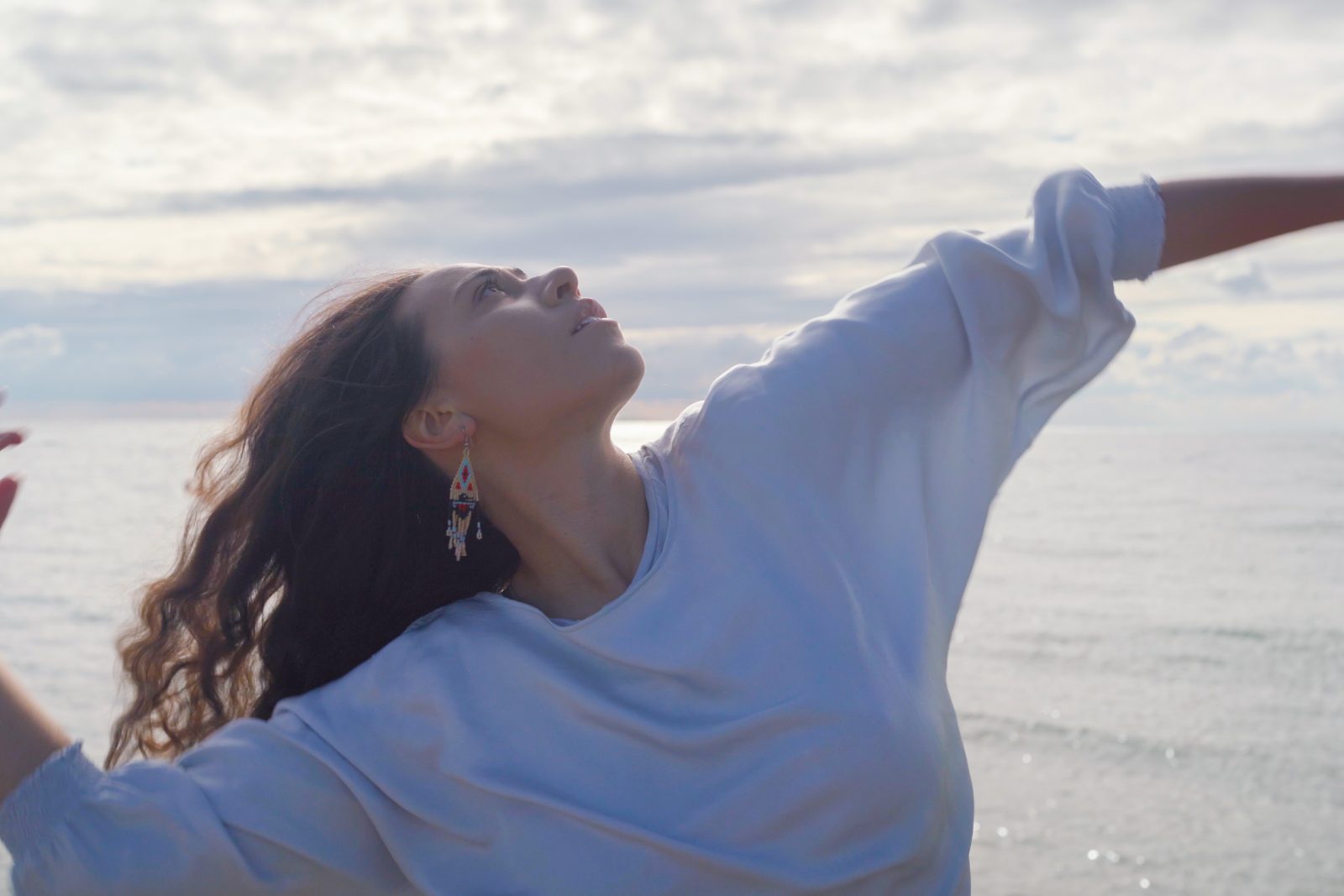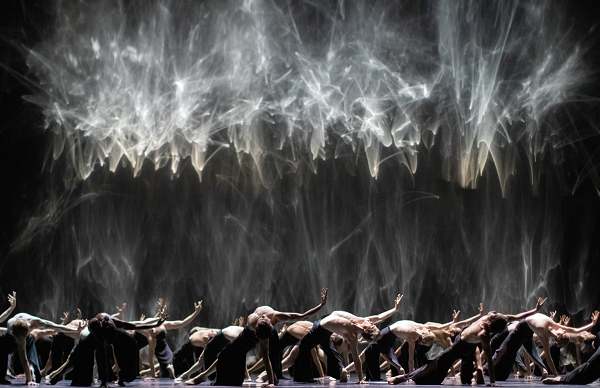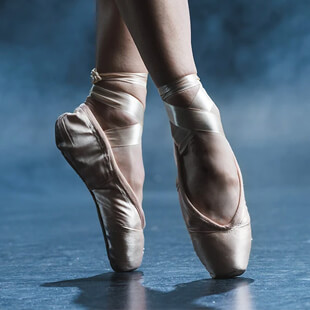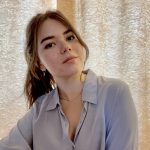Voices of Mountains is available to watch for free through the Canadian Opera Company website until July 15, 2022.
Themes of isolation and connection run through Canadian Opera Company’s new online work, Voices of Mountains. Conceived by mezzo-sopranos Rebecca Cuddy and Marion Newman with dance artist Aria Evans, the concert showcases the ways music and movement unite us. As Cuddy and Newman sing from the Richard Bradshaw Amphitheatre, accompanied by pianist Gordon Gerrard, Evans dances in various outdoor locations in Toronto.
Accompanying Ian Cusson’s new composition, Fire, Evans, surrounded by trees with her long wavy hair flowing in the wind, reaches her arms up like flickering flames. The words “A woman can’t survive by her own breath alone; she must know the voices of the mountains,” ring out as Evans sits by an inactive fire pit and seems to will the fire to life through ritual before she embodies the movement of a tall flame. As Cuddy and Newman sing “I am the continuance of blue sky,” Evans raises her arms and looks up to the sky, one with her surroundings.

Right from this first piece, the integration of movement and music is clear, with Evans interpreting the words and tone, a free spirit in the natural world while the musicians stay isolated inside their glass-walled space. As Evans explains in an interview that follows the work, separating dance and song is a colonial idea, and Indigenous storytelling integrates the two.
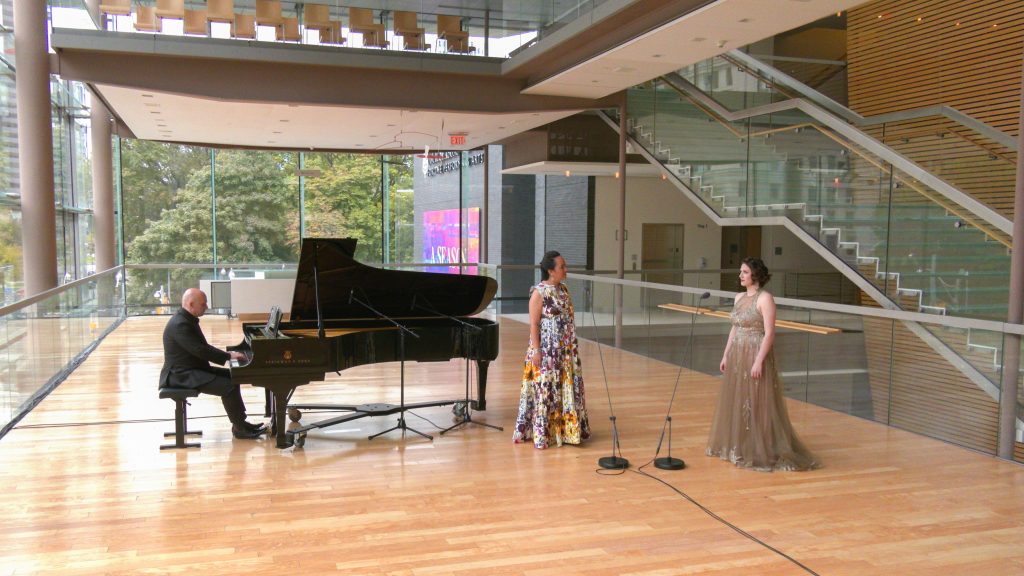
The line “I am the continuance of blue sky” is included as part of the new land acknowledgement sculpture commissioned by the Canadian Opera Company and created by Cuddy and dramaturge Julie McIsaac. Standing in the large empty theatre lobby, the isolated music stand covered in Métis beadwork is a physical reminder of the important connections we have to the land, to each other and to our shared history and goal of reconciliation.
The tone shifts, becoming joyful and open as Evans gallops and spins to Gabriel Fauré’s Mandoline in a small courtyard. A winged knight looks on as she opens her arms wide and looks to the sky, expansive and light in her movements until she turns and runs towards the statue.
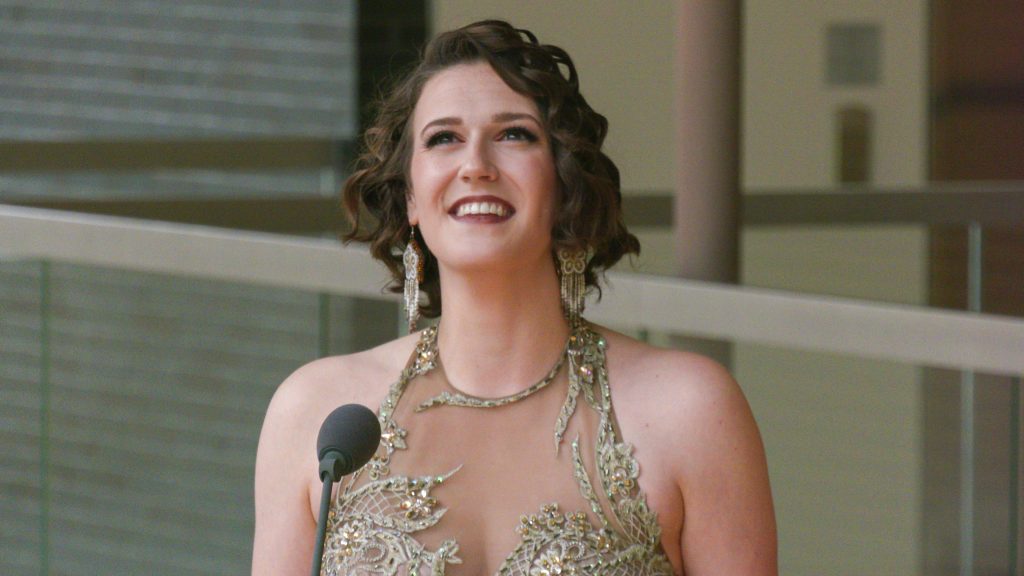
With Tomson Highway’s The Sage, The Dancer and the Fool, Evans clings to the post of a gazebo, swinging back and forth in contemplation. She lets her head fall back, pushing and pulling herself around the edges of the structure, struggling to come to terms with something and searching for answers. As the piano builds, she outstretches her arms and slowly spins, ready to collect whatever wisdom may come her way. Her hands trace the outline of her face before she returns to the gazebo, content with what she’s found.
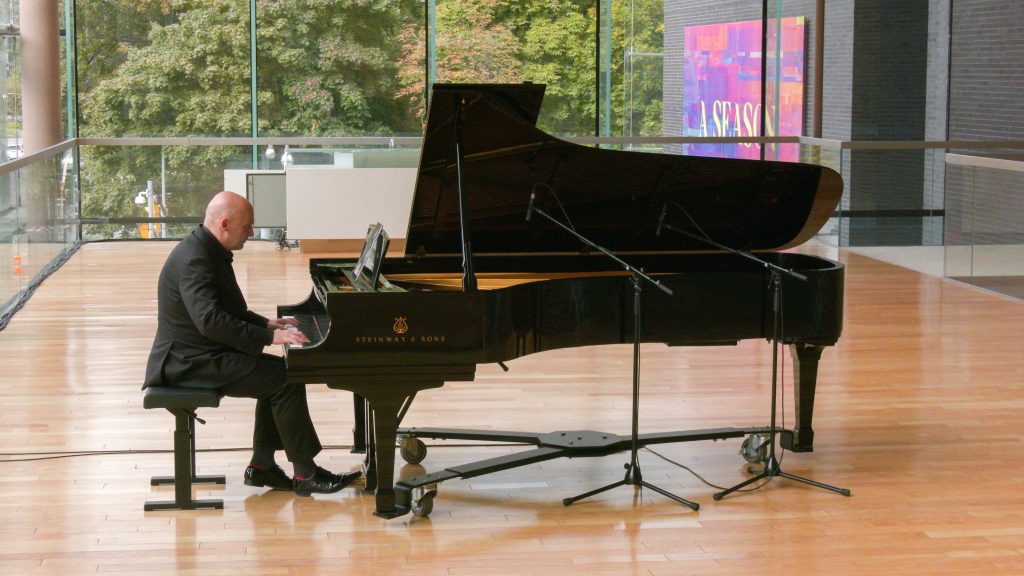
The film editing, which cuts between the artists in the theatre and Evans outdoors, stays relatively simple as we’re taken back and forth between the two. At times, leaving one to see the other feels like missing out. Showing them side by side on a split-screen might help to better integrate the two, but, on the other hand, the separation emphasizes the distance and loneliness that comes to the fore as the tension between isolation and connection persists.
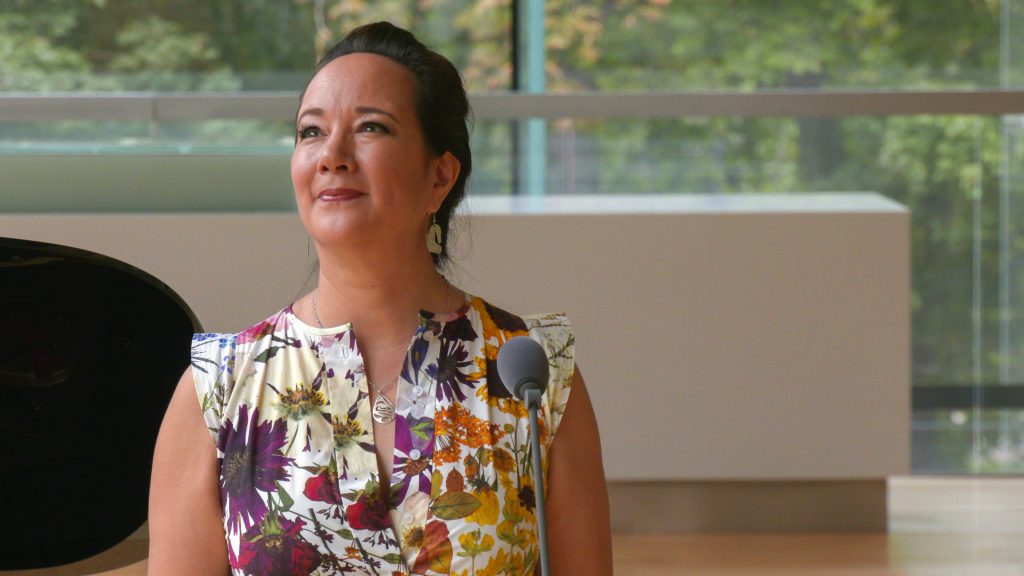
Not every piece of music is accompanied by movement. Text by Marie Clements set to Brian Current’s Language Lesson, with Cuddy and Newman reciting Indigenous words, is a unique piece that would have been an interesting opportunity for Evans to interpret. Similarly, Cusson’s The Devil’s Language with text by Marilyn Dumont about the Cree language has no movement either.
Perched on large rocks beside the water, Evans moves like a seabird as Cuddy and Newman sing Edward Elgar’s Sea Slumber Song. Slowly leaning forward with arms outstretched like wings gliding on the breeze, the sun behind her, Evans gracefully moves along the rocks. The waves roll in, mirroring lyrics about “whispering waves” and “foam glimmers” until Evans rolls behind one of the rocks and disappears as if consumed by the land.
A finale set to Offenbach’s Belle nuit, ô nuit d’amour brings together peaceful, reflective moments from each of the previous dance scenes. It ends with a shot of the musicians superimposed onto Evans as she walks through the trees and fades away – the connection the artists share is clear, yet they remain separated and we’re left with a longing to see them come together.
Dance Media Group strengthens the dance sector through dialogue. Can you help us sustain national, accessible dance coverage? Your contribution supports writers, illustrators, photographers and dancers as they tell their own stories. Dance Media Group is a charitable non-profit organization publishing The Dance Current in print and online.

Tagged:
